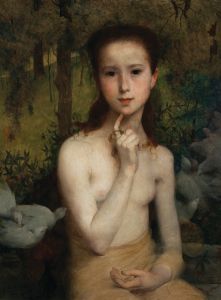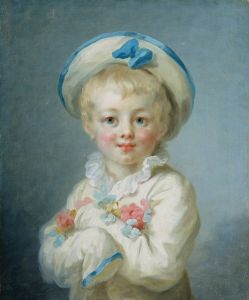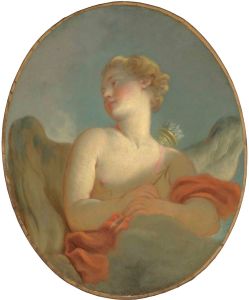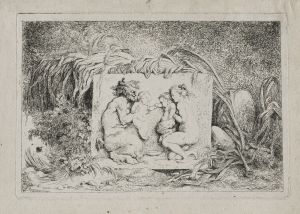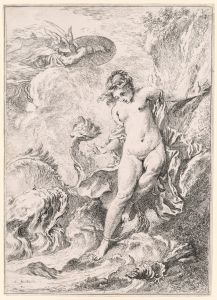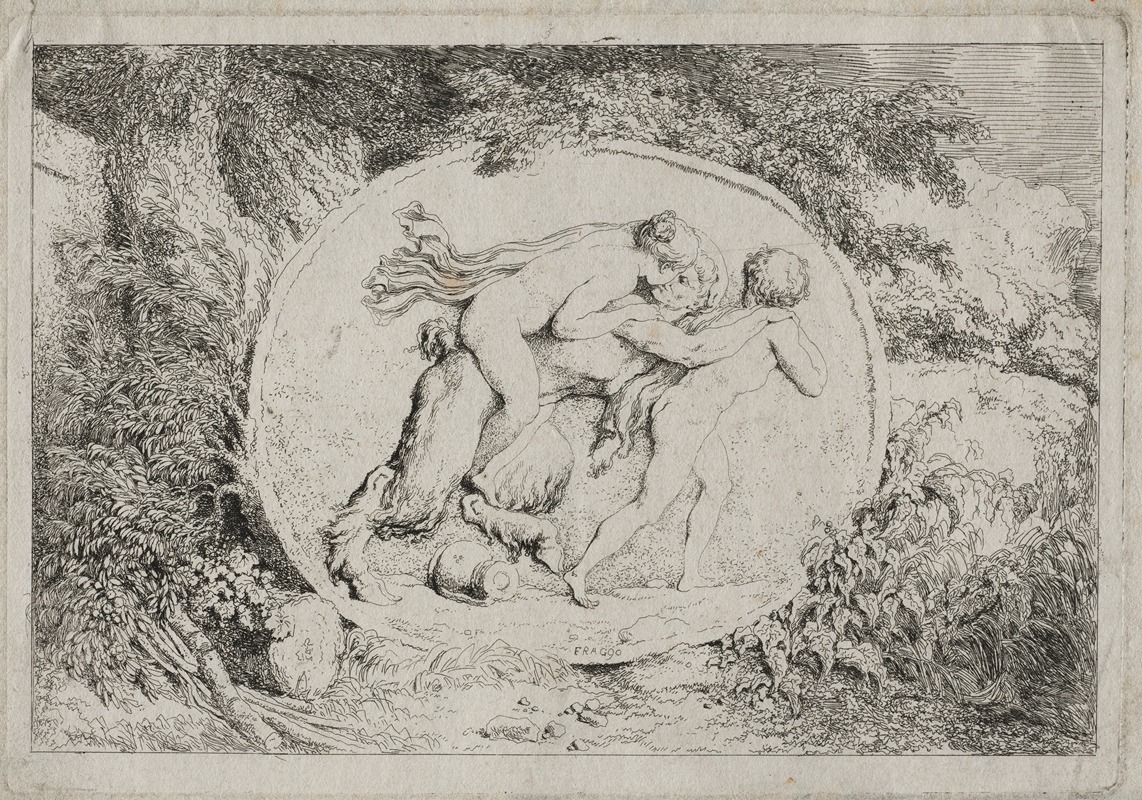
Bacchanales; Nymph Astride a Satyr
A hand-painted replica of Jean-Honoré Fragonard’s masterpiece Bacchanales; Nymph Astride a Satyr, meticulously crafted by professional artists to capture the true essence of the original. Each piece is created with museum-quality canvas and rare mineral pigments, carefully painted by experienced artists with delicate brushstrokes and rich, layered colors to perfectly recreate the texture of the original artwork. Unlike machine-printed reproductions, this hand-painted version brings the painting to life, infused with the artist’s emotions and skill in every stroke. Whether for personal collection or home decoration, it instantly elevates the artistic atmosphere of any space.
Jean-Honoré Fragonard's "Bacchanales; Nymph Astride a Satyr" is a captivating example of the Rococo style, characterized by its playful and sensuous themes, as well as its intricate detail and vibrant use of color. Fragonard, a prominent French painter of the 18th century, is renowned for his ability to capture the frivolity and exuberance of the Rococo period, and this painting is no exception.
The artwork depicts a scene from classical mythology, a common subject in Rococo art, which often drew inspiration from ancient Greek and Roman myths. In this painting, a nymph is shown riding a satyr, a creature from mythology that is half-human and half-goat, known for its lascivious nature and association with Dionysian revelry. The nymph, a symbol of beauty and grace, is portrayed with a sense of movement and vitality, embodying the playful spirit of the Rococo era.
Fragonard's technique in this painting is notable for its fluid brushwork and the soft, luminous quality of the colors. The composition is dynamic, with the figures arranged in a way that suggests motion and interaction. The use of light and shadow adds depth to the scene, enhancing the three-dimensionality of the figures and the lushness of the surrounding environment.
The painting reflects the Rococo fascination with themes of love, nature, and mythology, often depicted in a light-hearted and whimsical manner. Fragonard's work is characterized by its emphasis on pleasure and sensuality, and "Bacchanales; Nymph Astride a Satyr" is a quintessential example of this approach. The painting invites viewers into a world of fantasy and delight, capturing the essence of the Rococo's celebration of beauty and indulgence.
Fragonard's career was marked by his ability to adapt to the changing tastes of his time. Initially trained in the classical tradition, he quickly embraced the Rococo style, which was in vogue during the reign of Louis XV. His works were highly sought after by the French aristocracy, who appreciated the lighthearted and decorative qualities of his paintings. However, as the Rococo style fell out of favor towards the end of the 18th century, Fragonard's popularity waned, and he spent his later years in relative obscurity.
Despite this, Fragonard's legacy endures, and his paintings continue to be celebrated for their technical mastery and their ability to capture the spirit of an era. "Bacchanales; Nymph Astride a Satyr" remains an important work within his oeuvre, exemplifying the artist's skill in rendering mythological subjects with a sense of joy and exuberance.
Today, Fragonard's works, including "Bacchanales; Nymph Astride a Satyr," are held in high regard by art historians and enthusiasts alike. They are appreciated not only for their aesthetic qualities but also for their insight into the cultural and social dynamics of 18th-century France. Fragonard's paintings offer a window into a world of elegance and fantasy, reflecting the tastes and values of a society that prized beauty and pleasure above all else.








